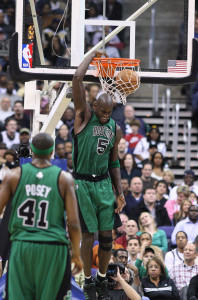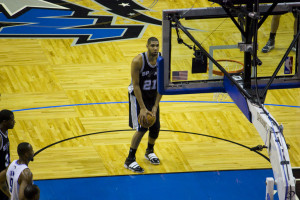Basketball Player Positions Explained: Power Forward
The Power Forward (PF) for a basketball team in the modern era of basketball holds down the interior offense of a team. With the decline of genuine Centers throughout the world of basketball, the PF has had to step up and become the primary scorer within a team’s offense within and around the keyway. This situation is acute enough to see Power Forward’s often playing out of position and filling the role of a Center not only at domestic levels, but internationally within the top leagues and competitions.

There are a number of reasons for the decline in the specialised role of a Center. One of the more significant is the speed and spacing at which the modern game of basketball is played at. This has meant to traditional players within the Center role have not been adapted to be more mobile, less low post driven and more dynamic around the keyway offensive that is now demanded. This has result in the body type of these players filling interior positions being smaller and more mobile just like that of the traditional Power Forward.
The Power Forward is also finding that their mobility is more applicable in the modern game of basketball on defence. Having the ability to guard players on the perimeter more adequately to allow defensive rotations to adjust off an on-ball screen for example.
The individual offensive skill set of the Power Forward is very large. While players in this position were expected to play heavily around the keyway, this is giving way to a more expanded range of offensive abilities. Possessing a strong mid-range game is vital for the Power Forward who is often called upon to flare, fade and flash around the keyway.

A Power Forward will still need to be capable in back to the basket or facing up to the basket. Some players are able to be proficient in both styles of play but it is mandatory that at the very least a PF is capable within one dimension of interior offense. It is also worth noting that if the team’s system places the PF into the role of a Center, then the ability to play against bigger and stronger opponents will be needed. This in itself is a skill worth its weight in gold.
The Power Forward is one of the pillars within most teams rebounding systems. Expected in many teams to secure an double digit average of rebounds the Power Forward must be adapt at both defensive and offensive rebounding. Again, if playing out of position the ability to box-out and keep a bigger threat away from the basket will be something a PF must do, and do well.
Physically the Power Forward must be able to compete with the biggest and best an opposition has. Often seen as a blue-collar worker constantly challenging through strength and determination to achieve the tasks demand by their coaches and needed by the team. If ever there was a position within a basketball team that exemplified effort, the Power Forward would be it.
Tactically many of the teams use a Power Forward as the primary on-ball screener. This is so the Center is left around the basket and the more versatile and mobile Power Forward can be involved in the changing dynamic that is the two-man game. This player is usually one of the key elements in other tactical aspects such as screening and within a team’s transition as an early post target. All of these roles highlight the different tireless work a Power Forward must be involved in and thrive upon.
The Power Forward fills a vital role within any team dynamic. This role and scope of skills by which a Power Forward is likely to be judge is constantly growing with the advancements in the game of basketball concerning offensive and defensive systems. More so than any position the Power Forward is changing and in so will be the most challenging position to play into the future.







Leave a Reply